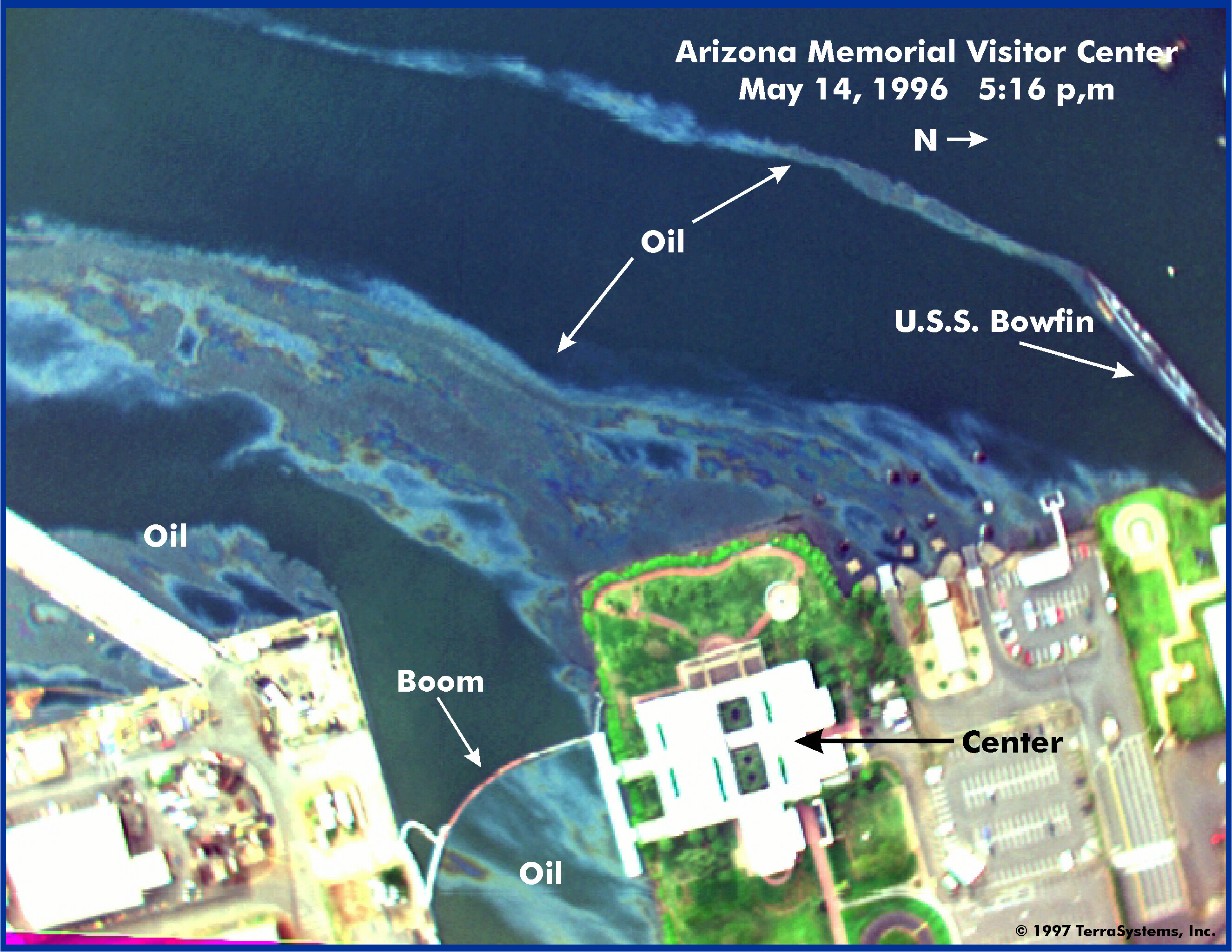The popular saying,”Lost the battle, win the War”, has strong relevance for the Pearl Harbor Memorial. While the attacks on December 7, 1941 left 3,000 dead or wounded, those who survived created a strong tradition of annual pilgrimages to respect and honor those who paid the ultimate sacrifice for their country. The initial Pearl Harbor Memorial site, the USS Arizona, was created to honor those who had died in the attacks. The Pearl Harbor Memorial is a 184 feet structure that spans the sunken USS Arizona, which still holds the remains of hundred of servicemen.
The main attraction, the USS Arizona, on which the memorial is built holds special significance. The memorial structure, pictured below, was designed to give an overall effect of serenity. The Pearl Harbor Memorial holds special significance to those directly impacted to it; it has still managed to gain prominence throughout the United States. Dee Britton, in her piece What is Collective Memory, discusses the ability of memorial sites to act as a totem object to create a sense of community and unity. The Pearl Harbor Memorial is able to create a sense of community and unity because it represents a tragic attack and loss on not just in Hawaii, but on the American people.

There is a decline in veteran pilgrimages due to aging occurring at the Pearl Harbor Memorial. There is a sense of hopelessness from the veterans that they won’t be able to keep the memory alive for future generations. John Anderson, a Pearl Harbor Survivor, lost friends and a twin brother on the USS Arizona; he has continued to come back to pay his respects to the fallen and keep the collective individual memories of the soldiers alive with other veterans. But looking at tourism at the Memorial site, that shouldn’t be a problem. But at 97 years old, Anderson, like many other veterans, are becoming to old to make the journey every year. This is shifting the focus of visitors to the memorial to tourists who are looking into the American collective memory for the Pearl Harbor Attacks.

This increasing demand for the Memorial has allowed the tourism to flourish, even though the number of veterans are decreasing. While direct connections are decreasing with time, popularity for the Memorial sites is increasing. Developments such as the Pearl Harbor movie, increased patriotism after 9/11, and more additions to memorial sites have increased the marketability and allure of the Pearl Harbor Memorial sites. For example the Pearl Harbor Memorial now contains the USS Arizona Memorial, the USS Missouri battleship, the USS Bowfin Submarine Museum, the Pearl Harbor Memorial, and gift shops.

Today there are a number of ways to visit the Pearl Harbor Memorial. Sites, such as Pearl Harbor Tour Reservations & Visitor Information provide comparisons between numerous tour companies that focus on the Pearl Harbor Memorial. The upcoming 73rd anniversary is fast approaching on December 7th, and there are a number of websites, such as the one listed above that, offering tourists the opportunity to see the courageous sacrifices made for America.



Should I add more information related to the memory aspect? Does my blog make sense and correlate to what the assignment was asking?
LikeLike
I think you did a very good job of staying on track and making all the information flow properly. Also the information based on memory is good i think its enough very informational. The blog does correlate with the assignment.
LikeLike
I too think your Blog answers the prompt correctly, I like your use of Images, and the context around them. I also think you chose good hyperlinks to support your blog. Well done!
LikeLike
Prof. Patterson,
Do you think I was able to expose my audience to the history of Pearl Harbor Memorial, while also showing a shift in tourism to the Memorial? I tried to go for a casual, yet informative tone for people with an interest in historical sites and provided them with options to visit the Memorial site.
LikeLike
I think that the post definitely fulfills the purpose you’re describing here, although perhaps a little more detail at the outset–about the site itself and the early function as a pilgrimage site–might help, by contrast, to show the shift in function over time. Also, some source material on memory itself (perhaps the Britton piece?) might help to provide a conceptual frame for what you’re describing here (a sanctified site? a site that externalizes “official” and “vernacular” memory?).
LikeLike
We remember this event of Pearl Harbor Attack, because it left behind a mark that created a horrifc effect on the citizens and the survivors of the United States. Its left families mortified, and communities broken. Not only this, but the attack had cause America to go into World War II with a greivous attack from Japan, and alloed even further lives to be lost. We remember this by having a memorial of the U.S Arizona that had sunk which symbolizes the fall of Peral Harbor that day
LikeLike
I like how you put a picture of where the shipwreak sank, I thought it was a really cool picture. Also I think it is a good way of remembering the follwing marins that passed away
LikeLike